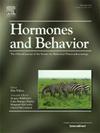Multimodal sexual signals are not precise indicators of fertility in female Kinda baboons
Abstract
Female fertility signals are found across taxa, and the precision of such signals may be influenced by the relative strength of different sexual selection mechanisms. Among primates, more precise signals may be found in species with stronger direct male-male competition and indirect female mate choice, and less precise signals in species with stronger indirect male-male competition (e.g. sperm competition) and direct female mate choice. We tested this hypothesis in a wild population of Kinda baboons in Zambia, combining data on female signals with reproductive hormones (estrogen and progesterone metabolites) and intra- and inter-cycle fertility. We predicted that Kinda baboons will exhibit less precise fertility signals than other baboon species, as they experience weaker direct and stronger indirect male-male competition. The frequency of copulation calls and proceptive behavior did not vary with hormones or intra- or inter-cycle fertility in almost all models. Sexual swelling size was predicted by the ratio of estrogen to progesterone metabolites, and was largest in the fertile phase, but differences in size across days were small. Additionally, there was variability in the timing of ovulation relative to the day of sexual swelling detumescence across cycles and swelling size did not vary with inter-cycle fertility. Our results suggest that female Kinda baboon sexual swellings are less precise indicators of fertility compared to other baboon species, while signals in other modalities do not reflect variation in intra- and inter-cycle fertility. Female Kinda baboon sexual signals may have evolved as a strategy to reduce male monopolizability, allowing for more female control over reproduction by direct mate choice.

 求助内容:
求助内容: 应助结果提醒方式:
应助结果提醒方式:


